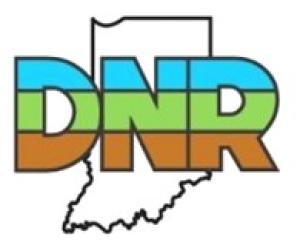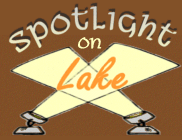
Mark your calendar for Indiana’s Free Fishing Days
If you missed the first Free Fishing Day on May 4, mark your calendar for the next ones, June 7-8, and Sept 27. While there are no licenses or stamps required on these special days, all regulations such as seasons, bag limits, and size limits still apply.
Free Fishing Days offer Indiana residents the opportunity to try fishing for the first time without having to purchase a fishing license or trout/salmon stamps.

If you already have your annual fishing license, this is a perfect opportunity to take friends and family fishing who haven’t gone before. Helping new anglers experience the fun and excitement that can be had out on the water is as fun as it is rewarding!
Not sure where to go fishing? Check out the Where To Fish map and find your new favorite fishing spot.

Calling all paddlers!
Do you enjoy kayaking, canoeing, paddle boarding, or wildlife watching? Consider becoming a Paddlecraft Index volunteer this summer.
Hoosier paddlers have a unique opportunity to encounter wildlife that spend time around Indiana’s waterways. Paddlecraft Index volunteers will help the DNR by completing a paddling trip postcard documenting the wildlife they observe while on the water from June 1 to July 31. After signing up online, volunteers will be mailed a packet with details on how to participate.

Check out the latest spring turkey harvest data
If you’re a spring turkey hunter, you might be interested in tracking this season’s harvest data through the spring turkey harvest dashboard. The interactive dashboard provides information for spring turkey seasons from 2017 through the current season. The dashboard can be sorted by year, county, harvest equipment, or the bird’s sex and is a great resource to see how this year’s spring season is progressing.

Help biologists collect fish data
We’re looking for anglers to submit their catches to the River Black Bass Angler Reporting Survey and the Muskie Angler Reporting Survey this spring and summer. The surveys will provide important statewide data that directly help fisheries management.
The River Black Bass Angler Reporting Survey collects information on smallmouth, largemouth, and spotted bass across the state. The information includes locations (rivers and streams only), number of hours fished, and the size of fish caught. The data for this survey are collected anonymously and reported as a statewide summary.
The Muskie Angler Reporting Survey collects information for muskie caught on Indiana lakes. Anglers will anonymously submit the number of hours fished, number of muskies caught, and pictures of their catch. This survey report will be summarized by individual waters.
Angler participation in these surveys allows for the anonymous collection of data that would usually be difficult to get and will provide important statewide data that directly helps fisheries management. Even if anglers don't catch a fish, it still provides useful information for fisheries biologists.

Support the Live Barn Owl Nest Webcam upgrade
The live Barn Owl Nest Webcam, located in southern Indiana, provides an inside look at the lives of state-endangered barn owls. Watching the owls in real time fosters a unique connection and appreciation of nature. The live cam is beloved by many Hoosiers, but the current camera has deteriorated over time, leaving viewers with a cloudy, pixelated view.
A new webcam will be paid for with a combination of federal funds and donations to the Indiana Nongame Wildlife Fund. To be a part of this much needed upgrade, donate to the fund. No donation is too small – every dollar makes an impact! In the meantime, you can watch the female barn owl and her eggs (albeit a blurry version of them) on our webpage.

Stay safe during tick season
Take steps to protect against ticks during the warmer months. Tick bites can make people and pets sick with diseases like Lyme disease and tularemia (also known as rabbit fever). Don’t let these critters spoil your fun. Remember these tips when you are out hiking, biking, and enjoying the outdoors:
• Dress appropriately: Wear light-colored clothing that covers your arms and legs.
• Use repellants: Use a tick repellant that contains DEET or another EPA-approved product.
• Avoid tick habitat: Stay on marked trails and avoid walking in high grass and brush.
• After a day outside, immediately check yourself, others, and your pets for ticks. It’s important to remove a tick as soon as possible.
For more tips to avoid ticks, visit the Indiana Department of Health’s tick bite prevention website.
Watch for poachers this turkey season
We Hoosiers value our wild turkeys for the many gifts they bring us. From getting to see their courtship displays in the wild, to the delicious meat they provide for the families of turkey hunters, we all want to protect the valuable resource that is our turkey population.
If you see someone attempting to kill turkeys illegally, including harvesting over their bag limit or taking more than one bearded bird, please share an anonymous complaint through the Turn in a Poacher or Polluter hotline at 1-800-847-4367 or file a complaint at TIP.IN.gov.

Recent news releases
- Changes made to stream trout stockings
- Stream trout opener set for last Saturday of April
- Nearly 4,000-acre Fish & Wildlife Area opens in southern Indiana
- Hoosier anglers can take Midwest Walleye Challenge
Upcoming events
- May 17: Guided Hike, Ambler Flatwoods Nature Preserve
- May 23: Guided Hike, Loblolly Marsh Nature Preserve
- Jun 07: Free Fishing Day, Statewide
- Jun 08: Free Fishing Day, Statewide
- Jun 12: Sandhill Crane Migration Game, Goose Pond FWA
More
- Buy a license
- Hunting information
- Where to Hunt
- Fishing information
- Where to Fish
- Fish & Wildlife properties
About Fish and Wildlife Management in Indiana
Fish and wildlife management and public access are funded by fishing and hunting license revenue and also through the Wildlife and Sport Fish Restoration Programs administered by the U.S. Fish & Wildlife Service. These programs collect excise taxes on sporting arms and ammunition, archery equipment, fishing equipment, and motorboat fuels. The money is distributed among state fish and wildlife agencies based on land size and the number of licensed anglers and hunters in each state. Find out more information about fish and wildlife management in Indiana at wildlife.IN.gov.
